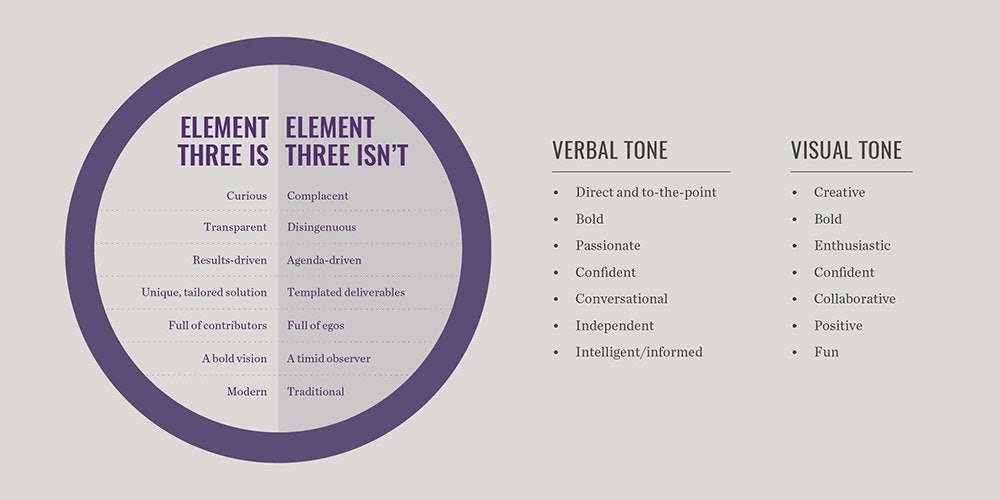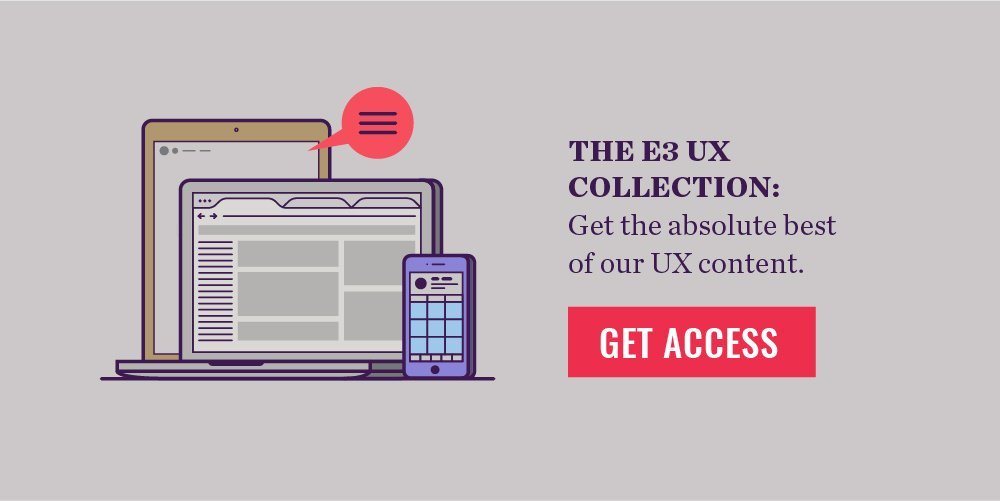All brand strategies communicate a brand’s plan and messaging for communicating and engaging customers. Good brand strategies incorporate customer needs and feedback. And GREAT brand strategies go a step deeper, focusing on solving a problem for users.
Think about that for a moment. It may sound confusing. How are customers different from users? In many ways, they aren’t different. But the terminology can help cause a mind shift. Customer implies buyer, which ultimately is tied to revenue. User is more ambiguous, more altruistic. Users are simply people who interact with your brand, whether they’re exploring your site or actually using your products and services.
Users may ultimately choose not to work with you. Or maybe they aren’t in the driver’s seat of a purchasing decision. But they might be one day. I’ve seen leads get nurtured for five years before moving further in the funnel, and even gotten feedback like “I’ve been following your brand since that study you released in 2009!”
Being altruistic and catering your brand (and marketing) strategies to your users creates loyalty, industry leadership, and ultimately brands that survive shifts in market trends.
So how do you ensure you’re incorporating user data into your strategy? Start with this simple three-step process, and you’ll find yourself on the right track!
1. Identifying User Pain Points
Customer research focuses on why customers converted and what their pains (and joys) are with your product. User research reveals not only these viewpoints on your product, but also broader buyer’s journey inputs and reasons why users did not choose you as their product or solution, which can be highly impactful in aligning your brand strategy to market demands. Also, for users not ready to shop, they may be looking to solve other problems that your brand may be uniquely suited to help solve.
An example of a brand catering to their users’ pains well, and not just the pains that will lead to a sale, is Moz. The SEO software company has long published content – blogs, guides, studies, etc. – well outside the realm of how their product meets a need or solving only SEO problems. Their approach to brand strategy has not only generated enormous brand loyalty, it’s also kept them ahead of industry trends by listening to their community. As SEO evolves, you often see Moz coming out with innovative outside-the-SEO-box add-ons and tools before other SEO companies. They’ve given guidance and tutorials to digital marketers, and in return marketers have provided product feedback, market trends and most importantly, loyalty.
So how are they and other brands identifying pain points outside of what their product specifically solves?
Media & Social Engagement Analysis
It’s not enough to look just at your own content engagement these days. When getting to the heart of what connects with your users – not just what converts them – look at industry publications and competitor blogs. What’s trending? What’s getting shared most? You’ll likely find content that doesn’t fall anywhere in your marketing and sales funnel. But that doesn’t mean it shouldn’t be informing your brand strategy.
Interviews & Surveys
Don’t just get to know your customers (though that’s a good idea too!), spend some time interviewing and surveying audience members who didn’t convert. Explore not only why they didn’t choose you but why they did choose a competitor – or didn’t choose a product or solution at all! This primary research may uncover gaps in your brand strategy.
Card Sorting, Focus Groups & Social Media
With so many digital metrics available today, traditional market research often gets overlooked. Many of the tactics we use for UX projects and product development help reveal pain points and user motivators that can inform your brand strategy. Don’t have time or budget for focus groups? Look to social media to get unfiltered pros and cons of your brand, products, and industry.
Remember, if you opt for traditional research routes, you’re not just gauging how users react to your brand or products. Use these methods to explore buying behaviors, industry sentiments, and customer psychographics.
2. Aligning Your Brand to these Pain Points
Sometimes brand strategy can fall flat if marketers don’t have the roadmap they need to translate strategy into actual messaging. For us, this roadmap is fairly simple and leans toward the tactical. Rather than create lengthy documents describing messaging goals, we like to hop right to how the brand is applied:
Is & Is Not Charts
One of the quickest ways to describe what the brand needs to accomplish is an “is and is not” chart. Here, we use descriptive words that help personify the brand. These will lead tone development, to ensure we aren’t missing with messaging even if we have the right pain points to target.
Voice & Tone
Next, take your is and isn’t chart and start bringing it to life. How will we apply these words in our written messaging? If we found that the brand needs to be analytical to connect with users, how should this guide the visual tone?
Messaging Matrix
Once you’ve nailed down voice and tone, provide examples for the product marketing and content marketing teams to use in copy development. For each persona, provide a high-level overview of their psychographic motivators, their unique pains, how they are interacting with your brand, and the message (in your new voice and tone) you need to use to connect with them.
3. Putting Your User Research into Practice
So you’ve fleshed out your messaging matrix and you’re confident your brand will set you up to be an industry leader. What now? It’s time to put your brand messaging where users will engage with it. Here’s a quick list of user-focused messaging that can help build your marketing funnel from the bottom out to grow your brand into an industry leader.
1. Product marketing
- Marketing collateral
- Website copy
- Value-based vs. conversion-based content (blog, studies, engagement-focused vs. lead gen)
2. Event marketing
- Collateral
- Activities
3. Social media
- Hashtags
- Community facilitation
4. Email nurturing
- Helpful content (not just produced content)
- LOTS of nurturing paths — keep qualifying people further to make sure you aren’t moving them too quickly through the funnel
Overall, focusing on users makes your brand more well-rounded. The time you stop thinking just about customers and conversions is the time you’ll truly get away from saying what you want and start saying what they want to hear.
Need more concrete direction on applying brand to messaging? Check out our guide on why your brand may be failing.








